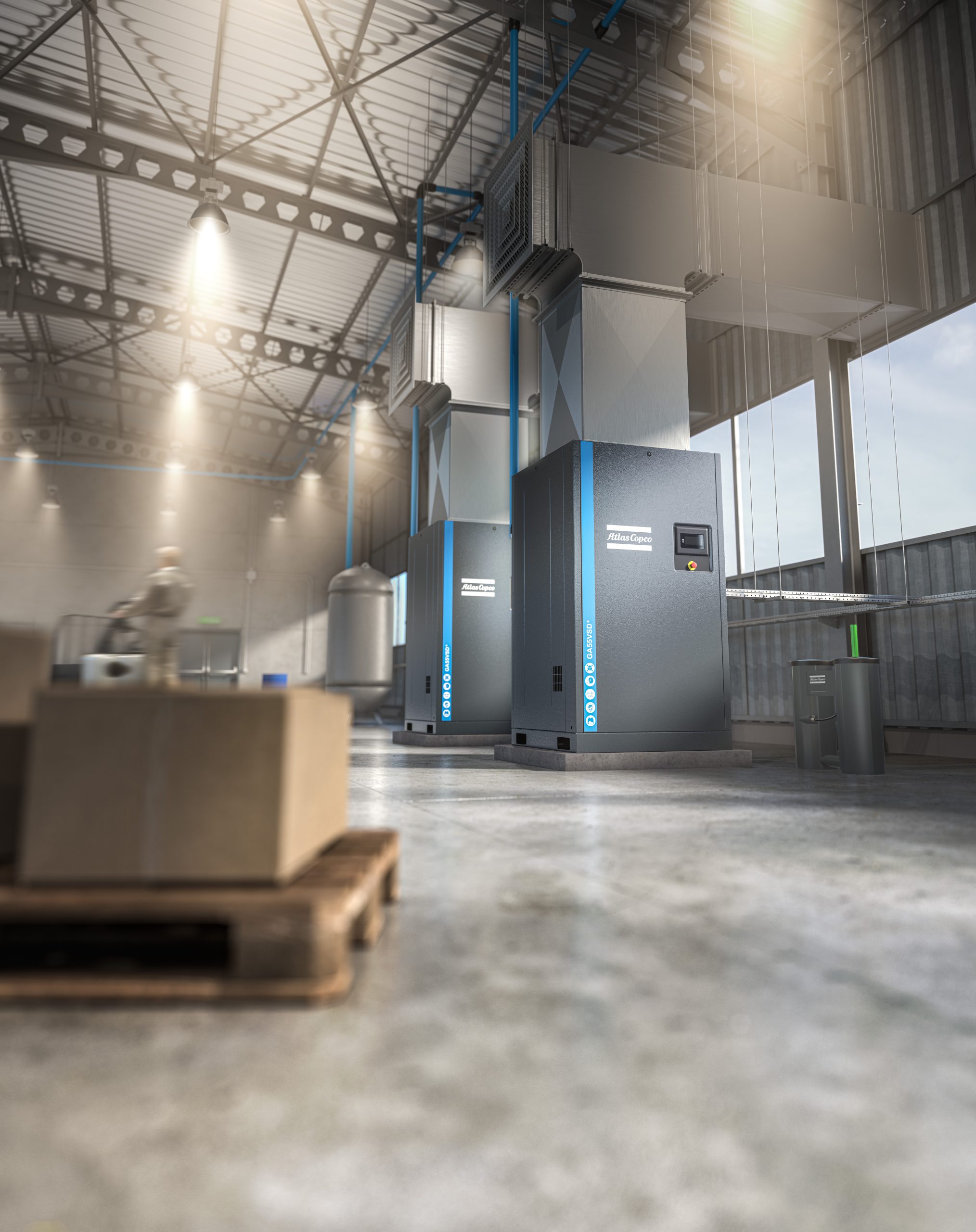Rotary Screw Compressors - Atlas Copco
Discover the Power of Rotary Screw Compressors
What is a Rotary Screw Compressor?
A rotary screw compressor operates by using two helical rotors, typically called the male and female rotors, that are housed within a chamber. These rotors are precisely machined and mesh together tightly, creating a series of air pockets or chambers between them.
The operation of a rotary screw compressor can be broken down into four main stages:
1. Intake: As the male rotor turns, it draws air into the chamber through the inlet valve. The air is then trapped in the spaces between the rotors and the chamber walls.
2. Compression: As the rotors continue to rotate, the air pockets become smaller, causing the trapped air to be compressed. This compression occurs continuously as the air moves along the length of the rotors.
3. Discharge: Once the air reaches the end of the rotors, it is pushed out through the discharge valve. The discharge pressure is determined by the design of the compressor and can be adjusted as needed.
4. Cooling and Lubrication: During the compression process, the air temperature rises. To prevent overheating, rotary screw compressors are equipped with a cooling system, typically utilizing air or oil cooling. Additionally, lubrication is necessary to reduce friction between the rotors and ensure smooth operation.
What are the advantages of a rotary screw compressor?
The main function of a rotary screw compressor is to provide a reliable and continuous supply of compressed air. They are known for their high efficiency, low noise levels, and ability to handle heavy-duty applications. Rotary screw compressors are commonly used in industries such as manufacturing, construction, automotive, and more, where a steady and consistent source of compressed air is essential for various operations and equipment.
There are several advantages of a rotary screw compressor compared to other types of air compressors. Here are some key advantages:
1. High Efficiency: Rotary screw compressors are known for their high efficiency in converting electrical energy into compressed air. They can deliver a continuous supply of compressed air with minimal energy wastage, resulting in lower operating costs.
2. Continuous Operation: Rotary screw compressors are designed for continuous operation, making them suitable for applications that require a constant and reliable source of compressed air. They can run non-stop without the need for frequent starts and stops, reducing downtime and increasing productivity.
3. Compact Design: Rotary screw compressors are typically compact in size, allowing for easier installation and space-saving. They can be conveniently placed in various settings, including workshops, manufacturing plants, and commercial spaces, where space may be limited.
4. Low Noise Levels: Compared to other types of compressors, rotary screw compressors are generally quieter during operation. They are equipped with noise-reducing features such as insulated enclosures and vibration dampening systems, making them more suitable for noise-sensitive environments.
5. Versatility: Rotary screw compressors are available in a wide range of sizes and capacities to meet different air demand requirements. They can handle various applications, from small-scale operations to heavy-duty industrial applications.
6. Lower Maintenance: Rotary screw compressors require less maintenance compared to reciprocating compressors. They have fewer moving parts, reducing the chances of breakdowns and the need for frequent repairs. Regular maintenance tasks typically include oil changes, filter replacements, and routine inspections.
Overall, the advantages of rotary screw compressors make them a popular choice for industries and businesses that rely on a continuous and efficient supply of compressed air.

How can we help?
Let us know how we can work with you. A member of our team will get back to you soon.















